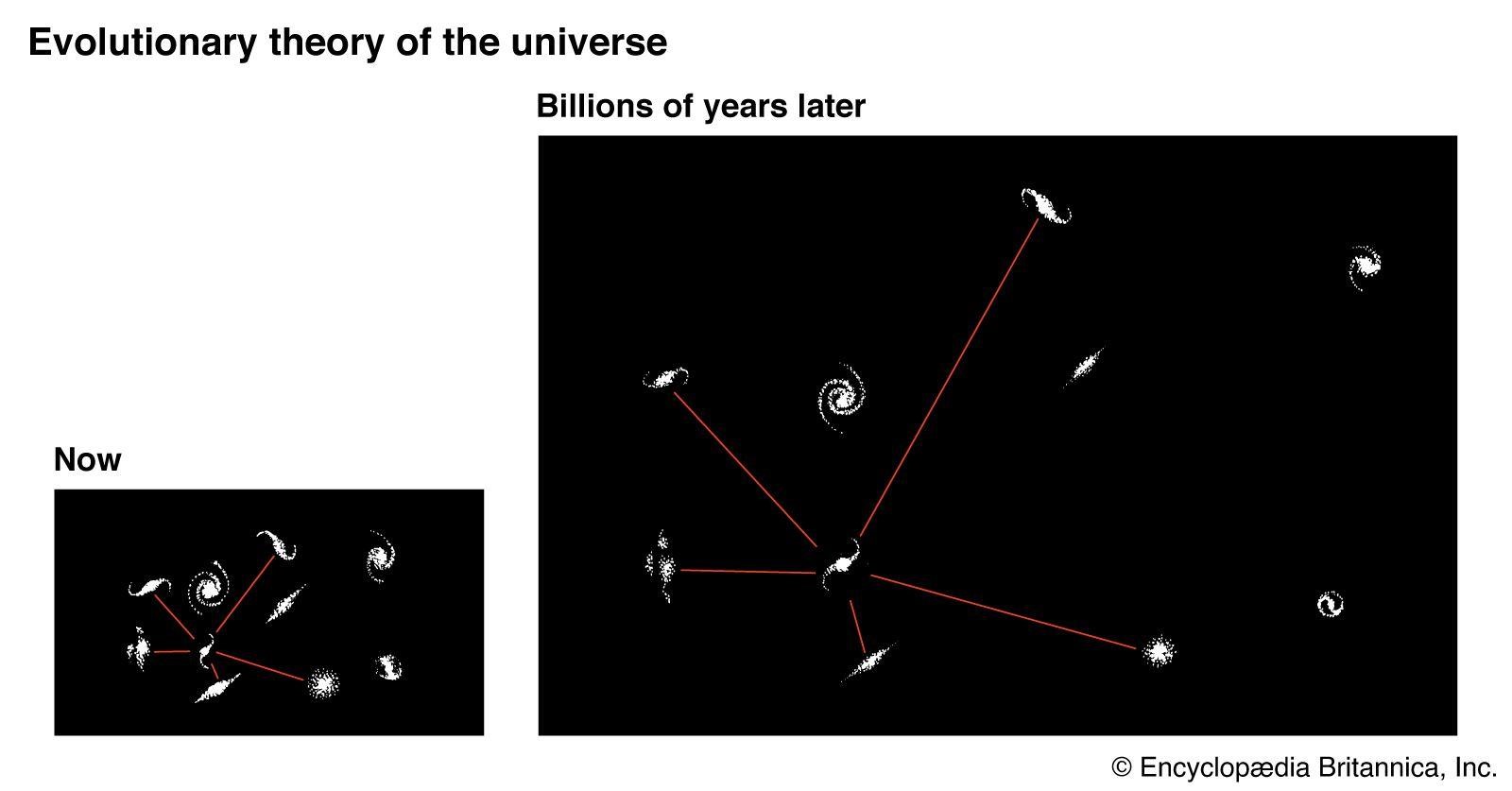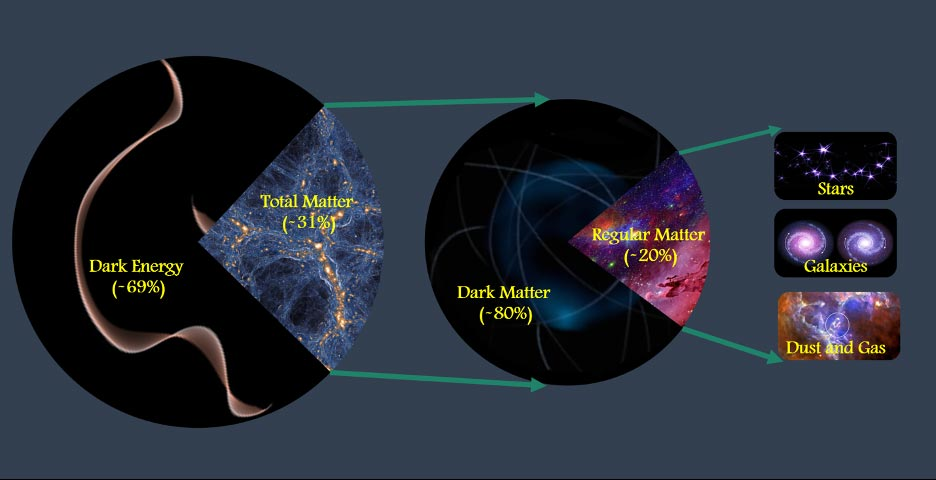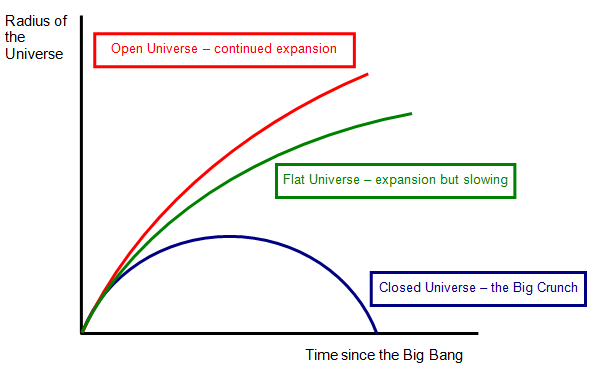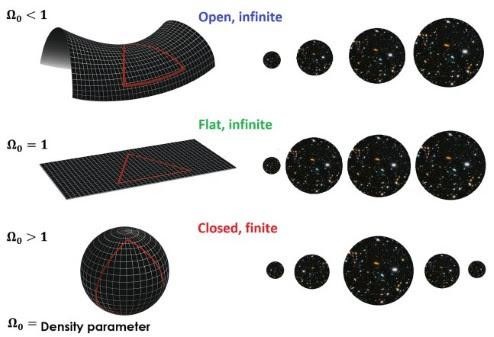The Cosmic Balloon – Understanding the Expansion of Space
- cosmofluencer
- December 21, 2024
- No Comments
By Vaishnavi Voragunti
Cosmofluencer (Season 04)
Introduction to the Expanding Universe
“At the heart of modern cosmology lies the concept that the universe is not static, but ever-expanding.” This sentence might have changed the idea of the universe for many of us and also made us wonder what is expansion of the universe? Why is it happening? Does it mean all the celestial bodies are moving away from each other?. So far, we are all familiar with the fact that The Big Bang Theory is the leading explanation for how the universe began. It simply states that the universe as we know it began as a single, infinitely hot, dense point. Later it expanded and stretched over the course of 13.7 billion years, first at unthinkable speeds and subsequently at a more measured rate.
This expansion still continues at an accelerating rate making it a continuously expanding universe that we know today. The phenomena of the expansion of the universe states that all the cosmic bodies are moving away from each other. Understanding the expansion of the universe is important for a number of reasons chief amongst which is understanding the ultimate fate of the universe.

Discovery Of Cosmic Expansion
The idea that space, the fundamental structure of the universe, is always changing is among the most astounding facts we have ever encountered. One of the biggest cosmic surprises came in the 1920s, when a number of scientists put forth a radical new idea: that space could fundamentally change by expanding or contracting over time. This wasn’t some wishful thinking but was supported by data which showed that the farther the galaxy was, the faster it appeared to recede from us.
The data only meant one thing in relevance to Einstein’s General Relativity theory -the Universe must be expanding. For generations, this simple rule that the average speed at which a distant object appeared to move away from us was proportional to its distance from us was known as Hubble’s Law, after Edwin Hubble .
Edwin Hubble, an American astronomer, was instrumental in founding the disciplines of observational cosmology and extragalactic astronomy. He used the 100-inch Hooker Telescope to observe the light from galaxies in 1929 and came to the conclusion that the universe is expanding.
Hubble noticed that the light from galaxies appeared to be shifted towards the red end of the spectrum, a phenomenon called redshift. He plotted the distance of approximately twenty-four galaxies from the earth against their observed velocities; he discovered that the farther the galaxy is, the faster it keeps moving away from the earth. From these observations he concluded that the universe is uniformly expanding in all directions.
The constant that relates the recession speed to the apparent distance, even today, is known as the Hubble Constant. One of the most significant figures in cosmology is the Hubble constant, which indicates the rate of expansion of the cosmos and may be used to determine the universe’s age and history. It can be used to estimate how quickly an astronomical object (such as a star or galaxy) should be traveling away from us given its known distance from Earth.
Role of Dark Matter and Dark Energy in Cosmic Expansion
Invisible yet influential, Dark matter is one of the universe’s greatest enigmas, shaping galaxies while remaining elusive to direct observation. Though we can’t see or sense it, dark matter makes up about 85% of the universe’s total mass secretly holding the galaxies together. The existence of dark matter, a mysterious element that doesn’t radiate light but manifests itself through its gravitational effects, has baffled scientists for decades. The unknown force that causes the rate of expansion of our universe to increase rather than slowing down over time is known as dark energy.
Astronomers found that the universe is expanding in the 20th century. They hypothesized that if the cosmos had enough mass and, hence, enough self-gravity, the expansion might reverse and cause a Big Crunch, or it might continue endlessly. Today, the cosmos appears to be growing faster than it did billions of years ago. What could be causing the expansion rate to accelerate?
Dark matter and dark energy play a major role in accelerating and decelerating the expansion process. Dark matter acts as an attracting force, like cosmic cement, holding our world together. Because dark matter interacts with gravity but it does not absorb, reflect, or emit light, this is the case. Dark energy is a repulsive force — a kind of anti-gravity — that propels the universe’s rapid expansion. Dark energy, which makes up around 68 percent of the universe’s total mass and energy, is by far the more potent of the two. Of the whole, 27% is made up of dark matter. The remaining 5% is made up of all the commonplace things we encounter and deal with on a daily basis.
Telescopic investigations show that most galaxies are moving apart, suggesting that they were formerly closer to one another. However, astronomers expected the universe’s expansion would be slowed by the gravitational pull of all the stars and galaxies in the universe.But, in the late 1990s, two groups of astronomers found something odd that disproved the notion.
The strange discovery by the astronomers was the accelerating expansion of the universe which contradicted the earlier notion that the expansion would be slowed down by the gravitational pull of the celestial bodies.Two separate study teams, the High-Z Supernova Search Team and the Supernova Cosmology Project, used observations of far-off Type Ia supernovae as “standard candles” to gauge the rate of cosmic expansion in the late 1990s. They noticed that the expansion was accelerating rather than slowing down as a result of gravity.
This led to the revolutionary discovery that this acceleration was being driven by an unidentified energy source, which was subsequently labeled “dark energy.” This discovery significantly altered our view of cosmology.
Types of Expansions: Open, Closed, and Flat Universes
According to current cosmological theories, the universe’s expansion can be classified into various types based on its geometry and eventual outcome. These categories are determined by the universe’s density, energy content, and the role of dark energy. Here are the main types of expansion:
Open Universe (Infinite Expansion)
This expansion results in the hyperbolic or saddle shaped universe. The ultimate fate of the universe in this type of expansion is never ending expansion. The pace of expansion slows but never ceases in this situation. The universe will eventually undergo a “Big Freeze” or heat death, in which all energy is dispersed equally and no important activities take place, as galaxies separate and stars burn out.
Closed Universe (Big Crunch)
This expansion leads to a spherical shaped universe. If the density of the universe is high enough, the expansion will eventually halt and reverse, causing a contraction. The universe could collapse into a singularity in what is known as the “Big Crunch,” potentially followed by another Big Bang, according to some cyclic models.
Flat Universe (Critical Expansion)
In this situation, although the expansion of the cosmos will never completely stop, it will asymptotically slow down. The equilibrium between the expansion rate and gravitational force occurs at the critical density. The expansion decelerates sufficiently to prevent a collapse or unending acceleration. This leads to a flat geometry with the density of the universe being equal to the critical density.
The Future of the Universe
At this pace of the expansion, we might reach a point where the observable horizon of the universe starts depleting. This indicates that the galaxies, stars and all other mysteries of the universe that we are currently able to observe will slowly disappear and all that is left will be stories of how the universe looked billions of years ago like one united family. The discovery of black holes, supernovae, exo-planets and all other celestial bodies that we are observing today with the help of various instruments will be mere theoretical concepts for the future generations centuries down the line like the age of dinosaurs and ice age were for us. This phenomena can also lead to the end of the universe for which many theories have been proposed like The Big Crunch, The Big Rip and The Big Freeze.
The universe’s expansion remains one of science’s most fundamental mysteries as we continue to study the cosmos. Our knowledge is always changing, from the first spark of the Big Bang to the possible destiny of a chilly, far-off future. The universe’s expansion poses questions that push the boundaries of human understanding, regardless of whether it culminates in a spectacular collapse or a gradual fade. Beyond the observable cosmos, what’s present? Will fresh findings alter our picture of the universe, or will dark energy continue to dominate? Even though we’ve learned a lot about the universe’s expansion, every new discovery seems to raise more complex issues.
References
1. Our expanding universe: Age, history & other facts | Space.com
2. What is Dark Energy? Inside our accelerating, expanding Universe | NASA
3. The Mystery of Our Expanding Universe | Beeyond Ideas
4. What does the universe expand into? Do we expand with it? | Sabine Hossenfelder






